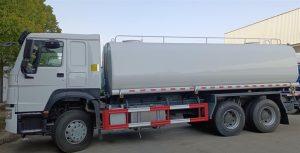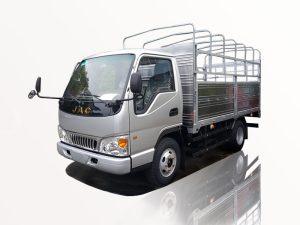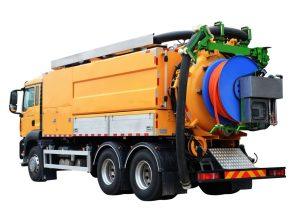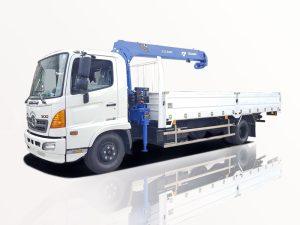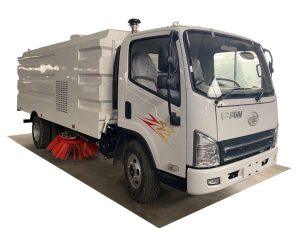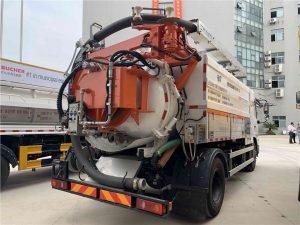Monday to Saturday - 8:00 -17:30
Fuel Tanker Semi: Understanding the Backbone of Fuel Transportation
The fuel tanker semi is an essential vehicle in the transportation of fuels, ranging from gasoline to diesel and more specialized fuels for various industries. This article delves into the world of fuel tanker semis, including their construction, operational considerations, safety regulations, and more. We’ll also explore practical tips for selecting and maintaining your fuel tanker semi.
1. What is a Fuel Tanker Semi?
A fuel tanker semi, or fuel tank trailer, is a specialized type of semi-trailer designed specifically for the transport of fuel products. Built with safety and efficiency in mind, these vehicles play a crucial role in maintaining the supply chain of energy resources.
1.1 Key Components of a Fuel Tanker Semi
- Tanker Body: Typically made from aluminum or stainless steel, the tanker body is crucial for storing various fuels securely.
- Chassis: The framework that supports the weight of the tanker and its content.
- Pump Systems: Used to transfer fuel from storage tanks to the tanker and vice versa.
- Valves and Hoses: Essential for fuel management and dispensing.
- Safety Features: Include spill containment systems and emergency shut-off valves.
1.2 Types of Fuel Tanker Semis
Fuel tanker semis can be categorized based on the type of fuel they carry:
- Petroleum Tankers: Designed for gasoline and diesel.
- Chemical Tankers: Used for transporting various chemical products.
- LPG Tankers: Specially constructed to carry liquefied petroleum gas.
2. Construction and Design
2.1 Material Utilization
Most fuel tanker semis are constructed from materials that can withstand potential corrosive effects of the fuels they carry. Common materials include:
| Material | Advantages | Suitability |
|---|---|---|
| Aluminum | Lightweight, resistant to corrosion | Petroleum products |
| Stainless Steel | Durable, high safety standards | Chemical products |
| Carbon Steel | Cost-effective, strong | Less corrosive fuels |
2.2 Design Considerations
When designing a fuel tanker semi, safety is paramount. Here are some critical design features:
- Tank Shape: Oval or cylindrical designs improve stability.
- Compartmentalization: Allows transport of multiple fuel grades.
- Insulation: Important for temperature-sensitive fuels.
3. Operation of Fuel Tanker Semis
3.1 Driving and Handling
Driving a fuel tanker semi requires specialized training. Operators must understand the challenges associated with the size and weight of the vehicle, especially when fully loaded.
- Stability: A full-tank weight shift can affect driving dynamics.
- Braking: Increased stopping distance compared to regular trucks.
3.2 Loading and Unloading Procedures
Proper loading and unloading procedures are vital for safety:
- Inspect the pump and valves before use.
- Ensure proper grounding to prevent static discharge.
- Follow specific protocols for transferring different types of fuels.
4. Safety Regulations and Compliance
Fuel tanker operations are subject to stringent safety regulations aimed at preventing accidents and ensuring environmental protection. The main regulatory bodies include:
- Department of Transportation (DOT): Sets standards for transportation safety.
- Environmental Protection Agency (EPA): Imposes regulations for fuel emission and spillage.
4.1 Certification and Licenses
Operators must obtain the necessary certifications, which can include:
- CDL (Commercial Driver’s License)
- Hazmat (Hazardous Materials) endorsements
5. Maintenance of Fuel Tanker Semis
5.1 Routine Maintenance Checks
Regular maintenance is essential to ensure optimal performance and safety. Important checks include:
- Brake System: Regular inspection for wear and tear.
- Pump Operation: Ensure all pumps and valves function properly.
- Tire Condition: Inspect for alignment and tread depth.
5.2 Common Issues and Repairs
Operators should be aware of common issues:
- Leakage: Regular checks for cracks or compromises in the tank.
- Pumping Issues: Address any irregularities in fuel transfer rates.
6. Economic Aspects of Fuel Tanker Semis
6.1 Cost of Ownership
The cost of owning and operating a fuel tanker semi involves multiple factors, including:
- Purchase price of the tanker
- Insurance premiums
- Fuel expenses
- Maintenance costs
6.2 Revenue Generation
Fuel tanker semis can be a profitable business venture. Revenue can come from:
- Transporting fuel for major oil companies
- Local deliveries to gas stations and industrial sites
- Long haul services for specialized clients
7. Tips for Choosing the Right Fuel Tanker Semi
When selecting a fuel tanker semi, consider the following key factors to ensure you make a wise investment:
7.1 Evaluate Your Needs
Assess your operational requirements, including:
- Volume Requirements: Choose a tank capacity that aligns with your transport needs.
- Fuel Type: Ensure compatibility with the types of fuels you will be transporting.
7.2 Brand and Model Research
Do your homework on the various brands and models available. Consider:
- Reputation: Look for established brands known for quality and safety.
- Warranty: Check for manufacturer warranties that cover key components.
7.3 Seek Professional Advice
Consult with industry experts to gather insights and recommendations. Joining industry forums can also help you gain valuable information from experienced operators.
8. Environmental Impact of Fuel Tanker Semis
8.1 Emission Standards
The fuel tanker industry is increasingly focusing on reducing its carbon footprint. Compliance with emission standards is not only a legal requirement but also beneficial for the environment.
8.2 Sustainable Practices
Some sustainable practices involve:
- Fuel Efficiency: Investing in newer models that consume less fuel.
- Alternative Fuels: Considering the transport of biofuels or electric options.
9. Future Trends in Fuel Tanker Semis
9.1 Technological Advances
The fuel tanker industry is constantly evolving to include:
- Telematics: Technology for real-time monitoring of vehicle performance.
- Automation: Potential for self-driving fuel tankers in the future.
9.2 Regulatory Changes
Stay informed about changing regulations aimed at improving safety and environmental sustainability. These can significantly affect operational procedures and costs.
FAQ Section
1. What is the average capacity of a fuel tanker semi?
The average capacity typically ranges from 5,000 to 11,600 gallons, depending on the model and design.
2. How do I obtain a hazmat endorsement?
To obtain a hazmat endorsement, you must pass a background check and a written test. Check with your local DMV for the specific process.
3. What safety features should I look for in a fuel tanker semi?
Look for features such as spill containment systems, emergency shut-off valves, and pressure relief valves to enhance safety.
4. How often should I perform maintenance on my fuel tanker semi?
Routine maintenance should be conducted according to the manufacturer’s guidelines, but a general rule is to do a thorough inspection every 5,000 miles and regular checks monthly.
5. Are there eco-friendly fuel tankers available?
Yes, some manufacturers are producing eco-friendly tankers that reduce emissions and improve fuel efficiency, utilizing materials and designs focused on sustainability.
6. What are the risks of transporting fuel by tanker semi?
Risks include potential spills, fire hazards, and accidents resulting from vehicle stability and handling issues. Adhering to protocols is crucial to minimize these risks.


